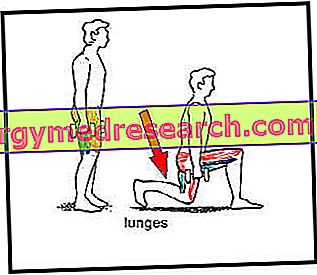What is that
5-alpha reductase is the name of an enzyme responsible for converting testosterone into dihydrotestosterone. The latter is the body's most powerful androgenic hormone and its activity is 4-5 times higher than that of testosterone.

As anticipated, it is produced thanks to the action of the 5-alpha reductase enzyme which makes the double bond between carbon 4 and carbon simple 5. This small modification greatly increases the affinity of the dihydrotestosterone for androgen receptors, increasing, consequently, the activity.
Dihydrotestosterone functions
The 5-alpha reductase enzyme is expressed mainly in the prostate, testicles, hair follicles and adrenal glands. Its action is very important during the uterine life, when dihydrotestosterone determines the development of the external male genitalia. When the isoform 5-alpha reductase type II is deficient due to a recessive genetic defect, there is an abnormal development of the external genitalia in the fetus, which results in disorders of sexual identity and infertility in adulthood.
From puberty onwards, dihydrotestosterone supports the development of so-called secondary sexual characteristics, such as the lowering of the tone of the voice, the growth of facial and body hair, the receding hairline and sebaceous secretion. Dihydrotestosterone is also important for the development of muscular masses and, on a psychological level, for the appearance of sexual stimulation. An excess of it is implicated in the onset of prostatic hypertrophy, acne, seborrhea, androgenetic baldness and hirsutism. A dihydrotestosterone deficiency is called into question in the onset of gynecomastia.
isoforms
In the human body there are two isoforms of the enzyme 5-alpha reductase, encoded by two different chromosomes and with different sensitivity to regulatory factors, respectively called type I 5-alpha reductase and type II 5-alpha reductase.
- The type I isoform concentrates above all in the skin, the sebaceous glands, the central nervous system and the liver.
- Type II isoform is mainly expressed in the prostate and hair follicle level.
drugs
Two drugs have been developed to inhibit the activity of these enzymes. The first, called Finasteride, Proscar or Propecia, is a selective inhibitor of the type II isoform. The second, called Dutasteride or Avodart, inhibits both isoforms. These medicines are used in the treatment of benign prostatic hypertrophy; finasteride is also widely used to combat hair loss. It is likely that in the future also dutasteride will be used for the same purpose (considering the greater efficacy in blocking the activity of the 5-alpha-reductase enzyme, a more marked action is expected, but also more evident side effects; currently studies are underway to establish it).
The side effects of 5-alpha reductase inhibitors, although rare, mainly affect the sexual sphere and can cause erectile dysfunction, decreased libido and ejaculate volume.



